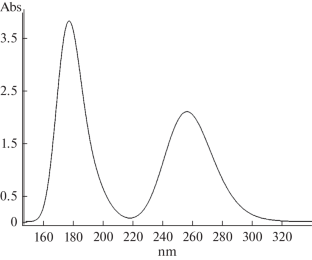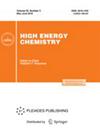硝基化合物与烯烃在乙腈中的相互作用机理
IF 0.6
4区 化学
Q4 CHEMISTRY, PHYSICAL
引用次数: 0
摘要
摘要用量子化学方法模拟了4-氟苯乙烯与4-CN-PhNO2在不同溶剂存在下的相互作用。提出了反应机理和各阶段的活化障碍。使用软件包Gaussian03进行计算。采用DFT/WB97XD/DGDZVP2方法获得了所研究结构的最佳几何参数,采用TD-SCF/DFT/WB97XD/DGDZVP2和TD-SCF/DFT/PBEPBE/6-311g++(3d2f,3p2d)方法计算了激发单重态和三重态,并采用IEFPCM模型解释了溶剂效应。采用DFT/PBEPBE/6-311g++(3d2f,3p2d)方法计算过渡态。本文章由计算机程序翻译,如有差异,请以英文原文为准。

Mechanism of Interaction of Nitro Compounds with Olefins in Acetonitrile
Abstract
The interaction of 4-fluorostyrene with 4-CN-PhNO2 in the presence of various solvents has been simulated by quantum chemistry methods. The reaction mechanism and activation barriers of its stages are proposed. The software package Gaussian03 was used for calculations. The optimal geometric parameters of the structures under study were obtained by means of the DFT/WB97XD/DGDZVP2 methods, the TD-SCF/DFT/WB97XD/DGDZVP2 and TD-SCF/DFT/PBEPBE/6-311g++(3d2f,3p2d) methods were used to calculate excited singlet and triplet states, and the IEFPCM model was employed to account for the solvent effects. The transition states were calculated by the TS method using the DFT/PBEPBE/6-311g++(3d2f,3p2d) method.
求助全文
通过发布文献求助,成功后即可免费获取论文全文。
去求助
来源期刊

High Energy Chemistry
化学-物理化学
CiteScore
1.50
自引率
28.60%
发文量
62
审稿时长
6-12 weeks
期刊介绍:
High Energy Chemistry publishes original articles, reviews, and short communications on molecular and supramolecular photochemistry, photobiology, radiation chemistry, plasma chemistry, chemistry of nanosized systems, chemistry of new atoms, processes and materials for optical information systems and other areas of high energy chemistry. It publishes theoretical and experimental studies in all areas of high energy chemistry, such as the interaction of high-energy particles with matter, the nature and reactivity of short-lived species induced by the action of particle and electromagnetic radiation or hot atoms on substances in their gaseous and condensed states, and chemical processes initiated in organic and inorganic systems by high-energy radiation.
 求助内容:
求助内容: 应助结果提醒方式:
应助结果提醒方式:


